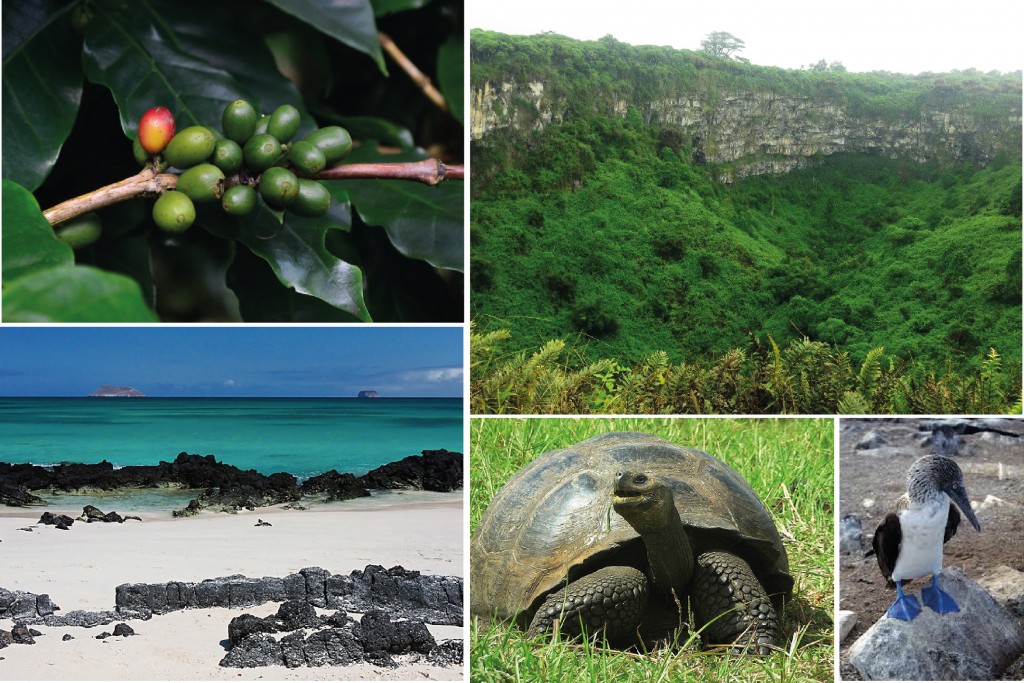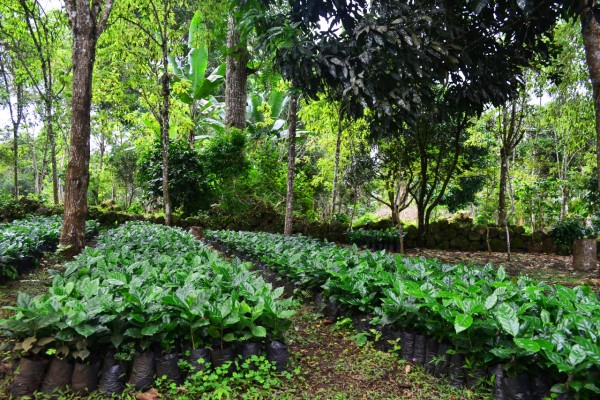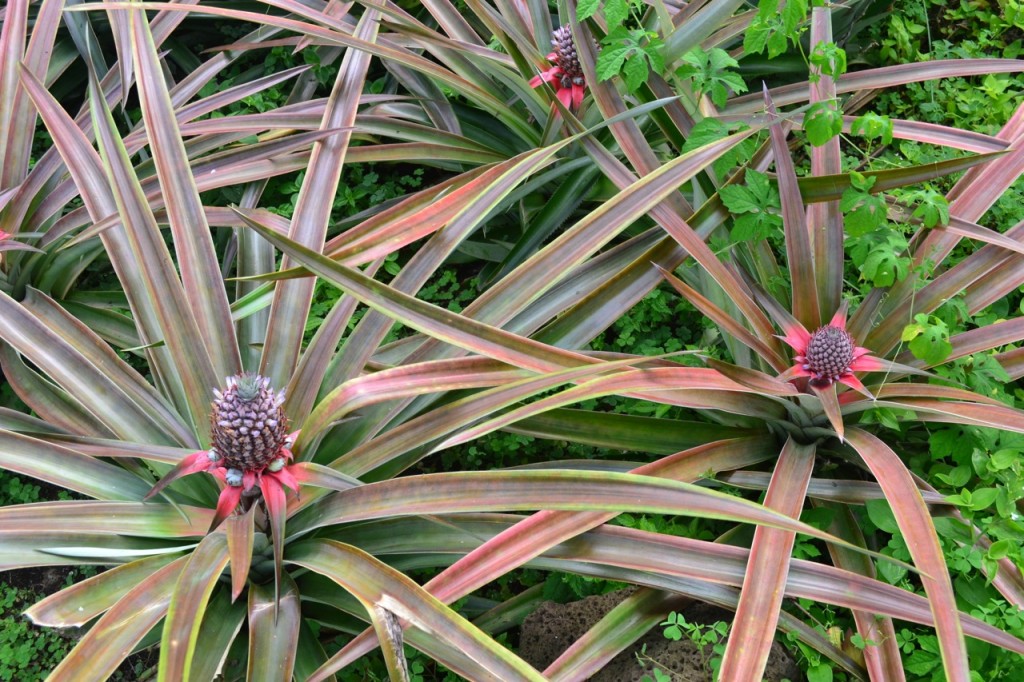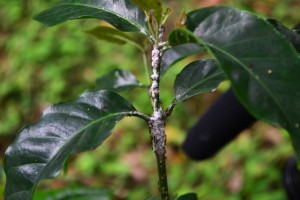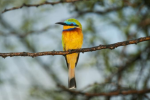By Karina Bautista
“Really? I thought no one lived there” is a somewhat common reaction I’ve gotten upon meeting someone new and telling them that home for me is the Galapagos. To assume that these are uninhabited islands is not a far-fetched misconception—of the 300 islets and islands that constitute the Galapagos archipelago, only 5 have settled populations, and just 3% of its territory is occupied. With a total population now numbering about 25,000 and growing, the islands are struggling to reconcile a unique natural heritage with the needs and wants of residents. Some local farmers are looking to sustainable agriculture, supporting their communities while conserving the unique ecosystems of their island homes. In doing so, they are inviting the world to experience and understand the Galapagos beyond their role as a linchpin in evolutionary theory and as a vacation hotspot. They would like you to take a sip of the Enchanted Isles’ latest marvel: its coffee. So all you baristas and foodies out there, you may soon be surprised to be trying a unique coffee that contributes to the conservation of these unique islands.
The relatively lush highlands of the larger Galapagos islands were once covered with native forest, dominated by Scalesia trees—a giant member of the daisy family. These areas unfortunately are also the most suitable for farming and human settlement and by the 1980s, had been mostly stripped of their natural vegetation, replaced with pastures crops and an increasing load of aggressive invasive species choking out native plants and encroaching into the park. The use of appropriate farming methods is the fulcrum in the essential balance between allowing people to stay on the land while maintaining habitat for many species.
Coffee has become a potential ally of these conservation efforts in Galapagos. Coffee production in the Galapagos Islands began with the arrival of the first Ecuadorian settlers to the Islands in the 1930s and 1940s. Shade-grown coffee production gives farmers an incentive to maintain tree cover and to control invasive species like fast-growing brambles and thickets of feral guava and cinchona trees, an activity that costs the Park administration millions. Some farmers have gone further and are using native Scalesia in combination with coffee plants to restore farms with something closer to the original forest cover. In this way, a morning cup of coffee from paradise provides a source of income for farmers, all based in agroforestry systems hospitable to native and endemic fauna and flora.
However, coffee from the land of giant tortoises still has a ways to go in order to achieve its full potential as both a gourmet item and a tool for conservation. Not only are the fauna and flora of the Galapagos exceptionally unique, but so are the challenges facing producers. The greatest of these are economic: farming in Galapagos, particularly organic farming, is rarely lucrative enough to make a living. Galapagos is an oceanic archipelago nearly 1000 km away from Ecuador’s continental territory, and this distance is reflected in the islands’ high prices, which accounts for the highest costs of living in the nation.
So let’s zoom in for a closer look: A worker earns $30 a day for collecting ripe coffee. During a day, a worker can usually fill 3 tins (15 kg each), which add up to a quintal (~46kg). Each quintal of green coffee is sold for $36, leaving a $6 profit per day. Now, keep in mind that Galapagos is tough territory to farm. Like in other island ecosystems, invasive plant and animal species are a major problem, and because soils are of relatively recent origin they are lacking in many nutrients and organic matter, requiring both significant nutrient addition and heavy rock removal. When you add the investment that is needed to create and maintain good soil to other costs, coffee by itself provides no real profit.
The challenges facing those aiming to have 100% organic coffee production are even more daunting. Invasive species like fire ants make it extremely difficult to harvest coffee (making the 3 tins/day per day standard a difficult one to reach), and as Galapagos conservation laws restrict importation of biological control agents, there is limited access to organic inputs that could potentially control such a pest. In addition, organic farming requires significant composting and rock removal, neither of which are cheap. According to the Ministry of Agriculture in Galapagos (MAGAP), only two producers are 100% organic in the entire archipelago. There are other coffee producers aiming for environmentally friendly, and “near- 100% organic” production, but who have chosen not to have to deal with fire ants, and thus resort to using chemical bait.
However, just like the islands themselves, Galapagos coffee is a true wonder. MAGAP is now investing in processing and quality improvements which most producers will need to fulfill the potential of this specialty bean. In the past, Galapagos coffee has been mostly sold to intermediaries for low prices, with no control on quantity or quality. The “Galapagos” name has also been wrongly used by continental producers looking to better market their coffee. With the support of MAGAP, producers have now joined under one co-op, and are coordinating efforts to establish a Galapagos “specialty coffee” standard, which would position producers for higher prices, associate the name only with high quality and unique environmental conditions, and offer the possibility of making a true living from farming (possibly even organic farming). This last point is a huge consideration in a place where a great deal of food and goods must be imported, and whose major conservation threat comes from the introduction of invasive species when bringing in those goods.
These local efforts, which also include maintaining healthy agricultural practices to support soils and strengthen agroforestry systems against diseases like coffee rust, will also create a more robust buffer zone protecting national park territory from invasive plant species. So, while ensuring the safety of the iconic image of Galapagos as a “Giant-tortoise Jurassic Park” and “Rare-Animal Kingdom,” these initiatives will also redefine the way Galapagos is known to the rest of the world, becoming a leader in the use of coffee for healthier farms and populations.
Recommended Links
[clear]
